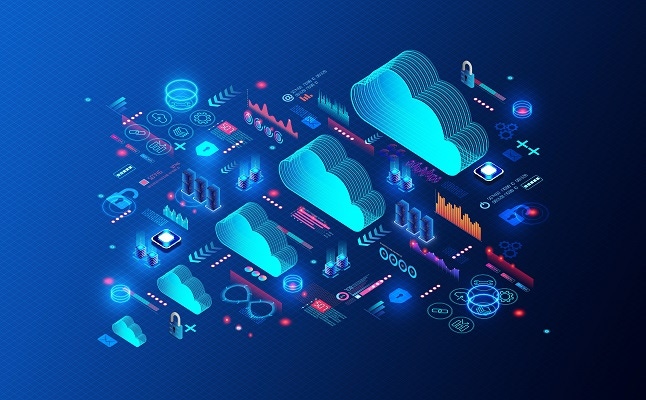Hyperscalers 101: What to Know About Hyperscale Data Centers
Hyperscalers promise an almost unlimited amounts of compute, database, and storage capacity. But who really needs such an abundance of resources?

Hyperscalers are here, yet there's still significant confusion over exactly what a hyperscaler is and why an enterprise might want to consider signing on with one.
What Is a Hyperscaler?
The meaning of the word “hyperscaler” has evolved over the last few years, says Christian Schneider, a managing director at business advisory firm Deloitte Consulting. “Traditionally, it was a term for any company that offered a variety of services over the cloud at a massive scale,” he notes. Today, however, the term is most frequently used to describe a handful of major global cloud service providers.
Many individuals have simplified the term hyperscalers to refer to the three largest providers: Amazon Web Services, Microsoft Azure, and Google Cloud, says Bernie Hoecker, a partner and enterprise cloud transformation lead with technology research and advisory firm ISG. “These three firms have approximately two-thirds of the market share,” he adds. Although not major cloud providers, Meta, Oracle, Apple, and IBM are also generally categorized as hyperscalers by most market analysts.
Limitless Resources
Hyperscalers offer their customers virtually limitless compute, database, and storage capacity. “These services are easily accessible, highly available, and have a strong focus on security and resilience,” Schneider says. “They tend to be offered on a pay-as-you-go pricing model.”
Hyperscaler customers gain agility via rapid on-demand access to technology that would ordinarily require a massive financial investment, as well as weeks or months to procure, build, and operationalize. “This on-demand model for infrastructure also becomes cost-effective for businesses of all sizes -- only paying for what you use versus maintaining data centers and infrastructure,” says Eric Drobisewski, senior architect at Liberty Mutual Insurance.
Most hyperscalers offer an extensive product suite that allows customers to move virtually any IT workload into the cloud. “This includes almost any x86-based application,” Schneider says. In fact, hyperscalers are generally quick to embrace the latest technology trends and either build services around them or work with partners who offer similar services. “This includes themes such as AI/ML, big data, grid computing, Internet of Things, containerization, and others,” he notes.
On the other hand, when legacy mainframe or proprietary workloads are involved, things can sometimes become a bit tricky. For such unique situations, most hyperscalers offer migration tools that modernize older workloads, allowing them to efficiently migrate to and function in the cloud, Schneider says. “These include hardware emulation and middleware emulation software packages, as well as automated refactoring tools,” he explains. In some instances, manual rewrites may be required. “But as the tools evolve, these scenarios continue to be less common,” Schneider notes.
Current hyperscaler adopters are primarily large enterprises. “The speed, efficiencies, and global reach hyperscalers can provide will surpass what most enterprise organizations can build within their own data centers,” Drobisewski says. He predicts that the partnerships being built today between hyperscalers and large enterprises are strategic and will continue to grow in value. “As hyperscalers maintain their focus on lifecycle, performance, and resiliency, businesses can consume hyperscaler services to thrive and accelerate the creation of new digital experiences for their customers,” Drobisewski says.
Approaches to Hyperscaler Migration
Many adopters begin their hyperscaler migration by selecting the software applications that are best suited to run within a cloud environment, Hoecker says. Over time, these organizations will continue to migrate workloads to the cloud as their business goals evolve, he adds.
Many hyperscaler adopters, as they become increasingly comfortable with the approach, are beginning to establish multi-cloud estates. “The decision criteria is typically based on performance, cost, security, access to skills, and regulatory and compliance factors,” Hoecker notes.
Meanwhile, attempting to commoditize a hyperscaler, using only base services to address vendor lock-in concerns, can backfire and prevent the adopter from reaching the full value of their cloud investment, Schneider warns. “Each hyperscaler has powerful integrated tools, both from its own catalog and from partner firms, that creates a more secure, automated, and better functioning experience,” he explains. “Organizations should embrace those points of differentiation to gain the full benefits of the public cloud.”
Hyperscalers Outlook
In the near term, Drobisewski expects that most hyperscalers will focus on enabling and supporting large enterprise transformations. “Enterprises are dealing with the entanglement of decades of technology, modernizing critical workloads to take advantage of the transformational digital capabilities provided by the hyperscalers,” he states. “Investing in the acceleration of decomposition and modernization provides a significant benefit for both enterprise consumers as well as the hyperscale providers.”
Over the long term, Drobisewski predicts that hyperscalers will need to become more distributed in order to address the growing needs of an increasingly digitally enabled and hyper-connected world. “Enabling the processing power to shift closer to the consumer will allow businesses to engage with customers through advanced AI/ML capabilities in real-time, offloading complex analytics to the existing centralized infrastructure hyperscalers have built,” he explains.
What to Read Next:
Special Report: How Fragile Is the Cloud, Really?
Reality Check: Why Your Cloud Provider Won't Be Providing Multi-Cloud Failover
About the Author(s)
You May Also Like







